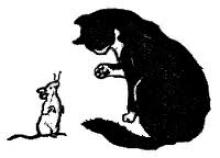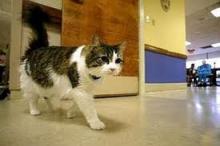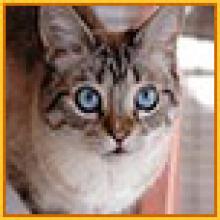One of the most recognizable cat coat patterns is the
tabby. Even so, tabby coats come in a surprising variety of colors and patterns. The rich swirls of color in a tabby cat's coat are what give us the English name for the pattern, which was derived from the French term "tabis." Tabis was a kind of watered silk fabric, which came in vibrant colors marked by swirls and wavy patterns.
The tabby coat is so ubiquitous, even in feral and wild cats, that most experts believe it is one of the original colors of the house cat's direct ancestor.
One thing all tabbies have in common is
the "M" pattern above the eyes. Most tabbies also have dotted lines on their facial whisker pads (cheeks) and pencil markings on their face, often including eyeliner. Beyond that, the variety of tabby coats is surprising! They come in four different patterns, each of which can be one of five different colors.
Tabbies can also be marked only on their points. This is seen in the Siamese, as well as some other "pointed" breeds. When tabby markings are only seen on the head, feet, and tail, it is called a "lynx point." A lynx point can come in any of the following color combinations.
Tabby Colors
In order to tell what color a tabby is, check the tip of its tail.
Brown: Black or dark coffee brown stripes on a brown or gray background.
Blue: Gray stripes on a gray or cream background.
Red: Colloquially called "orange," "ginger," or "marmalade." The best kind of tabby. (Just kidding! I have red tabbies.)
Cream: Peach stripes on a pale background.
Silver: Black stripes on a light background, typically cream, but red, blue, and white backgrounds also exist. A cat with black stripes on a red background is called a "cameo tabby."
Tabby Patterns
Mackerel: Also called a "tiger cat," mackerel tabbies have long stripes that travel vertically from their spine down to their belly. The name stems from the fanciful resemblance to a fish skeleton.
Classic: More common in the UK than the US, this tabby has a bold circular "target" pattern on its sides.
Spotted: This pattern features big bold spots, sometimes lined up like broken mackerel stripes. (A mackerel tabby may have many spots, but a spotted tabby has no unbroken stripes.)
Ticked: Also called "agouti," this pattern is common in the Abyssinian. This cat has a ticked coat, in combination with the classic tabby markings on the face.









